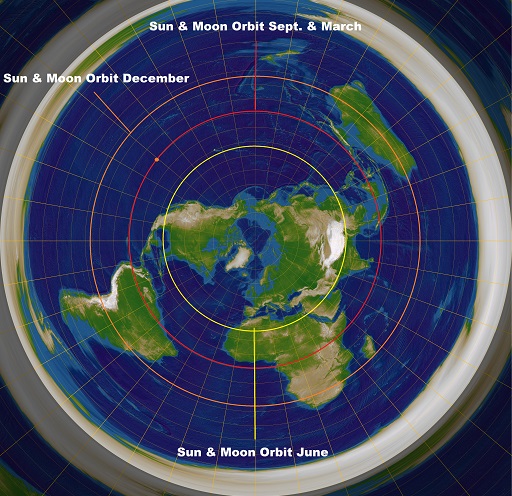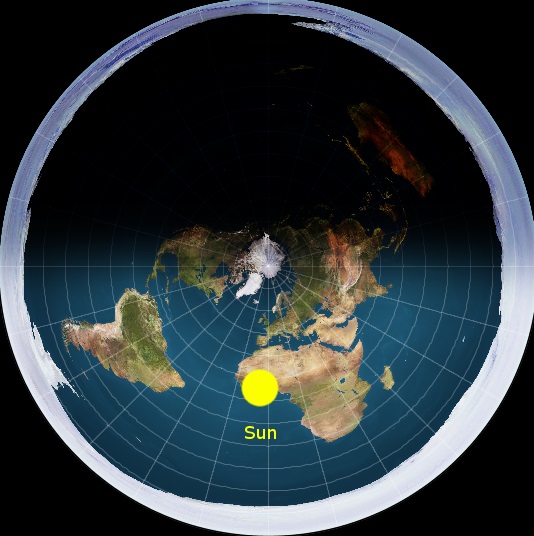- Joined
- Jul 28, 2016
- Messages
- 1,947
- Points
- 113
I have posted the relevant videos before:I think the flat Earth theory believes that the Pole is in the middle of the pancake/prata, with the Sun circulating above.......try imagining the "Sun" above the flat prata and its circling around the smaller prata from the mid point slowly going outwards.When the stationary Earth is flat and the Sun is going round above the Earth, why does the USA have winter during the end of the year while Australia has it middle of the year?
...
Which makes me wonder how the middle gets to be the coldest and how different parts of the pancake/prata gets winter and summer during the same month.
Explanation of the logic, belongs to flatearther:p
If "a picture is worth a thousand words", then a video must be worth at least ten thousand words, right?[video=youtube;hiOhsKAR6OY]https://www.youtube.com/watch?v=hiOhsKAR6OY[/video]
[video=youtube;XugZ9wGnk9M]https://www.youtube.com/watch?v=XugZ9wGnk9M[/video]

Also, from the first page of the thread:
[video=youtube;sb5kDVdPx84]https://www.youtube.com/watch?v=sb5kDVdPx84[/video]
atlanteanconspiracy.com/2016/02/sun-and-moon-equal-divine-balanced.html

In the Flat-Earth model, the Sun and Moon spotlights are perpetually hovering over and parallel to the surface of the Earth. From our vantage point, due to the Law of Perspective, the day/night luminaries appear to rise up the Eastern horizon, curve peaking high overhead, and then sink below the Western horizon. They do not escape to the underside of the Flat-Earth as one might imagine, but rather rotate concentric clockwise circles around the circumference from tropic to tropic. The appearance of rising, peaking and setting is due to the common Law of Perspective where tall objects appear high overhead when nearby, but at a distance gradually lower towards the vanishing point.

“Although the Sun is at all times above and parallel to the Earth’s surface, he appears to ascend the firmament from morning until noon, and to descend and sink below the horizon at evening. This arises from a simple and everywhere visible law of perspective. A flock of birds, when passing over a flat or marshy country, always appears to descend as it recedes; and if the flock is extensive, the first bird appears lower, or nearer to the horizon than the last. The farthest light in a row of lamps appears the lowest, although each one has the same altitude. Bearing these phenomena in mind, it will easily be seen how the Sun, although always parallel to the surface of the Earth, must appear to ascend when approaching, and descend after leaving the meridian or noon-day position.” -Dr. Samuel Rowbotham, “Earth Not a Globe, 2nd Edition” (85)

“What can be more common than the observation that, standing at one end of a long row of lamp-posts, those nearest to us seem to be the highest; and those farthest away the lowest; whilst, as we move along towards the opposite end of the series, those which we approach seem to get higher, and those we are leaving behind appear to gradually become lower … It is an ordinary effect of perspective for an object to appear lower and lower as the observer goes farther and farther away from it. Let any one try the experiment of looking at a light-house, church spire, monument, gas lamp, or other elevated object, from a distance of only a few yards, and notice the angle at which it is observed. On going farther away, the angle under which it is seen will diminish, and the object will appear lower and lower as the distance of the observer increases, until, at a certain point, the line of sight to the object, and the apparently uprising surface of the earth upon or over which it stands, will converge to the angle which constitutes the ‘vanishing point’ or the horizon; beyond which it will be invisible.” -Dr. Samuel Rowbotham, “Zetetic Astronomy, Earth Not a Globe!” (230-1)
Last edited:

 And hiya:p
And hiya:p



